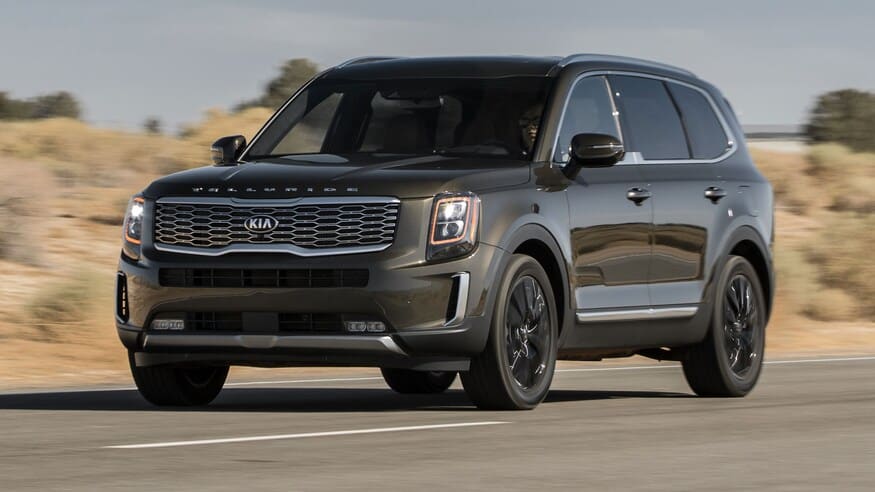Introduction to https://guia-automovil.com/2019/07/31/autos-mas-seguros
Choosing a car is one of the most significant decisions you’ll make, not just for yourself but for your loved ones as well. With traffic accidents remaining a leading cause of injury and death worldwide, the emphasis on vehicle safety has never been more critical. The safest cars (https://guia-automovil.com/2019/07/31/autos-mas-seguros) on the market offer a blend of advanced technology, robust design, and innovative features that significantly reduce the risk of accidents and enhance the protection of passengers. This comprehensive guide will explore the elements that make a car safe, highlight the top safest cars of 2024, and provide insights into selecting the best vehicle for your needs.
Understanding Car Safety
When we talk about a “safe” car, what exactly do we mean? Car safety is a multifaceted concept encompassing several aspects, from the vehicle’s ability to prevent accidents to how well it protects passengers during a collision.
What Makes a Car Safe?
The safety of a car is determined by various factors, including structural integrity, safety features, crash test ratings, and driver assistance systems. A combination of these elements creates a secure driving environment that can help prevent accidents or minimize injuries when a collision occurs. Manufacturers continuously innovate, integrating advanced materials and cutting-edge technology to improve safety standards.
Top Safety Features in Modern Cars
Modern cars are equipped with numerous safety features designed to prevent accidents and protect passengers in the event of a crash. These features are categorized into two main types: active and passive safety features.
Advanced Safety Technologies
Active safety features are designed to prevent accidents before they happen. These include:
- Anti-lock Braking System (ABS): Prevents wheels from locking up during sudden braking, maintaining vehicle control.
- Electronic Stability Control (ESC): Helps maintain control during skidding.
- Adaptive Cruise Control: Automatically adjusts the car’s speed to maintain a safe distance from vehicles ahead.
- Lane Keeping Assist: Alerts the driver if the vehicle begins to drift out of its lane and can apply corrective steering.
- Automatic Emergency Braking (AEB): Detects an impending collision and automatically applies brakes if the driver doesn’t react in time.
- Blind Spot Detection: Warns the driver of vehicles in the blind spot area.
Passive safety features, on the other hand, are designed to protect occupants during a collision. These include:
- Airbags: Deploy upon impact to cushion passengers.
- Seat Belts with Pretensioners: Tighten automatically to secure occupants during a crash.
- Crumple Zones: Designed to absorb and dissipate energy upon impact.
- Side Impact Protection: Reinforced doors and panels to protect passengers in a side collision.
Crash Test Ratings Explained
Understanding crash test ratings is crucial when choosing a safe car. Organizations like the National Highway Traffic Safety Administration (NHTSA) and the Insurance Institute for Highway Safety (IIHS) conduct rigorous crash tests to evaluate the safety of vehicles. These tests simulate various types of collisions, including frontal, side, and rollover crashes, to determine how well a vehicle protects its occupants.
How Safety Ratings Are Determined
Safety ratings are based on the vehicle’s performance in these tests. A car’s safety rating can range from one to five stars, with five stars being the highest. The IIHS, for example, uses a different rating system, awarding “Good,” “Acceptable,” “Marginal,” or “Poor” ratings in various categories. Vehicles that perform exceptionally well are given the “Top Safety Pick” or “Top Safety Pick+” designation.
Leading Organizations in Car Safety Testing
Several organizations globally are responsible for testing and rating car safety. These include:
- National Highway Traffic Safety Administration (NHTSA): A U.S. government agency that rates cars based on crash tests.
- Insurance Institute for Highway Safety (IIHS): A U.S. non-profit organization funded by the insurance industry, providing detailed crash test ratings and safety awards.
- Euro NCAP (European New Car Assessment Programme): Tests and rates vehicles sold in Europe.
- Australasian NCAP (ANCAP): Tests vehicles for the Australian and New Zealand markets.
Each organization has its own testing protocols and rating systems, but they all provide valuable insights into a vehicle’s safety performance.
Top 10 Safest Cars of 2024
Every year, car manufacturers push the envelope to improve the safety features of their vehicles. Here are the top 10 safest cars (https://guia-automovil.com/2019/07/31/autos-mas-seguros) of 2024, based on crash test ratings, safety features, and overall performance:
- Volvo XC90: Known for its exceptional safety features, including Pilot Assist and City Safety technology.
- Subaru Outback: Features EyeSight Driver Assist Technology and excellent crash test ratings.
- Tesla Model 3: Offers a robust suite of active safety features and strong performance in crash tests.
- Mazda CX-5: A compact SUV with advanced safety technology and high crash test ratings.
- Honda Accord: A perennial favorite for its balance of comfort, reliability, and safety.
- Toyota RAV4: Equipped with Toyota Safety Sense, offering comprehensive driver assistance.
- Hyundai Santa Fe: Features SmartSense technology, providing a high level of active safety.
- Genesis G70: A luxury sedan with advanced safety features and strong crash test performance.
- Audi Q8: A luxury SUV with a robust suite of safety technologies, including Pre Sense City.
- Ford Explorer: A family-friendly SUV with Co-Pilot360, a suite of advanced driver-assist technologies.
Sedans Known for Safety
Sedans have long been a popular choice for those seeking a safe, reliable vehicle. The following sedans are known for their outstanding safety features and performance in crash tests:
- Honda Accord: Offers a comprehensive suite of safety features, including Collision Mitigation Braking and Adaptive Cruise Control.
- Toyota Camry: A midsize sedan with a reputation for reliability and safety, equipped with Toyota Safety Sense.
- Mazda 6: Known for its stylish design and top safety features, such as Smart Brake Support and Lane Departure Warning.
SUVs with the Highest Safety Ratings
SUVs provide a higher driving position and more robust construction, which many drivers find reassuring. The safest SUVs on the market combine these benefits with top-notch safety features:
- Volvo XC90: A luxury SUV renowned for its comprehensive suite of safety features and advanced driver assistance systems.
- Subaru Forester: Offers EyeSight Driver Assist Technology and Symmetrical All-Wheel Drive, providing stability in all conditions.
- Kia Telluride: Features Forward Collision Avoidance and Safe Exit Assist, making it a top choice for families.
Electric Cars and Safety
Electric vehicles (EVs) have become increasingly popular, and many models boast impressive safety ratings. The battery placement in EVs often lowers the vehicle’s center of gravity, reducing rollover risk. Leading electric cars with high safety ratings include:
- Tesla Model 3: An electric sedan with an excellent safety record, including top ratings from the IIHS and NHTSA.
- Ford Mustang Mach-E: An electric SUV with advanced driver-assist technologies and high crash test ratings.
- Audi e-tron: A luxury electric SUV with a robust suite of safety features and impressive crash test results.
Luxury Cars with Advanced Safety Features
Luxury vehicles often come with the most advanced safety features, blending comfort with top-tier protection. The following luxury cars stand out for their safety:
- Mercedes-Benz E-Class: Offers PRE-SAFE technology that prepares the car for a collision when detected.
- BMW 5 Series: Includes Active Driving Assistant, which provides a range of active safety technologies.
- Lexus LS: A luxury sedan with an advanced suite of safety features, including Lexus Safety System+.
Affordable Safe Cars
Safety doesn’t have to come with a hefty price tag. There are several affordable cars on the market that offer excellent safety features:
- Toyota Corolla: A compact car with Toyota Safety Sense and high crash test ratings.
- Honda Civic: A reliable choice with Honda Sensing, a suite of advanced safety technologies.
- Hyundai Elantra: Offers SmartSense, a suite of safety features that includes Forward Collision Avoidance Assist and Lane Keeping Assist.
Safety Innovations on the Horizon
The future of car safety is bright, with new technologies and innovations continually being developed. Some upcoming safety technologies include:
- Augmented Reality Dashboards: Providing real-time information directly on the windshield to keep drivers informed without looking away from the road.
- Vehicle-to-Everything (V2X) Communication: Allowing cars to communicate with each other and with infrastructure to prevent accidents.
- Enhanced Autonomous Driving Features: With the development of self-driving cars, new safety standards are emerging, focusing on how autonomous vehicles can reduce accidents caused by human error.
Common Misconceptions About Car Safety
Many drivers have misconceptions about what makes a car safe. For instance, some believe that larger vehicles are inherently safer than smaller ones, but this isn’t always the case. The safety of a vehicle depends on its design, features, and how it performs in crash tests, not just its size.
The Role of Driver Assistance Systems
Driver assistance systems, such as lane-keeping assist and adaptive cruise control, play a crucial role in preventing accidents. These technologies are designed to assist drivers, not replace them, and they can significantly reduce the likelihood of collisions when used correctly.
Child Safety in Cars
For families with young children, selecting a car with excellent safety features is paramount. Features like rear-seat reminders, LATCH (Lower Anchors and Tethers for Children) systems, and robust side-impact protection are essential. Vehicles like the Honda Odyssey and Toyota Sienna minivans offer these features and more, making them top choices for families.
The Importance of Tire Safety
Tires are often overlooked in car safety discussions, but they play a crucial role in maintaining vehicle stability and control. Regularly checking tire pressure, tread depth, and alignment can help ensure optimal safety on the road.
Maintaining Your Car for Optimal Safety
Regular maintenance is key to keeping a car safe. This includes routine checks of the brakes, tires, lights, and other essential systems. Keeping up with regular service intervals and addressing issues promptly can prevent accidents caused by mechanical failure.
Safety Features for Older Drivers
As we age, our driving needs change. Cars with features such as adjustable pedals, high-contrast instrument panels, and advanced driver assistance systems are ideal for older drivers. Vehicles like the Subaru Outback and Toyota Avalon are particularly well-suited for senior citizens due to their safety features and ease of use.
How to Choose the Safest Car
Choosing the safest car involves more than just looking at crash test ratings. It’s about considering your specific needs, such as whether you often drive on highways or in urban environments, the size of your family, and your budget. Test driving, checking safety ratings from multiple organizations, and considering additional safety features can help you make an informed decision.
Impact of Road Conditions on Car Safety
Road conditions play a significant role in vehicle safety. Understanding how different road surfaces and weather conditions affect driving can help you stay safe. For instance, knowing how to drive in rain or snow, and having a vehicle equipped with all-wheel drive or stability control can make a big difference.
Insurance Benefits of Owning a Safe Car
Cars with high safety ratings often come with lower insurance premiums. Insurance companies consider a vehicle’s safety features and crash test ratings when determining rates, meaning that safer cars can save you money on insurance.
Future Trends in Car Safety
Looking ahead, car safety will continue to evolve. Innovations like advanced driver monitoring systems that detect distraction or drowsiness, and improvements in autonomous driving technology, will shape the future of road safety.
How Autonomous Vehicles Are Changing Safety Standards
Autonomous vehicles, or self-driving cars, are poised to revolutionize safety standards. These vehicles have the potential to reduce accidents significantly by eliminating human error, which is a leading cause of accidents. However, they also present new challenges, such as ensuring cybersecurity and developing new safety protocols for mixed traffic environments where both autonomous and human-driven cars share the road.
Conclusion
Choosing a safe car is one of the most important decisions you can make as a driver. With so many factors to consider, from crash test ratings to advanced safety features, it’s essential to stay informed and make a choice that best suits your needs. The safest cars (https://guia-automovil.com/2019/07/31/autos-mas-seguros) on the market today provide not only peace of mind but also the best protection for you and your loved ones. Whether you’re looking for a sedan, SUV, electric car, or a luxury vehicle, there’s a safe option out there that meets your requirements. Stay safe, drive smart, and always prioritize safety when choosing your next car.
Also Read: https://guia-automovil.com/2019/08/01/autos-con-peor-consumo-de-combustible/
FAQs
What are the top-rated safest cars of 2024?
The top-rated safest cars of 2024 include the Volvo XC90, Subaru Outback, Tesla Model 3, Mazda CX-5, and Honda Accord, among others.
How are car safety ratings determined?
Car safety ratings are determined through rigorous crash tests conducted by organizations such as the NHTSA, IIHS, and Euro NCAP, which evaluate a vehicle’s performance in various crash scenarios.
What is the difference between active and passive safety features?
Active safety features are designed to prevent accidents (e.g., ABS, ESC), while passive safety features are designed to protect occupants during a crash (e.g., airbags, crumple zones).
Are electric cars safe?
Yes, many electric cars have high safety ratings due to their low center of gravity and advanced safety technologies. Models like the Tesla Model 3 and Ford Mustang Mach-E are among the safest electric vehicles.
What should I consider when choosing a safe car for my family?
When choosing a safe car for your family, consider crash test ratings, the presence of child safety features, the vehicle’s size and design, and available driver assistance technologies.
How can I maintain my car for optimal safety?
Regular maintenance, such as checking tire pressure, brakes, lights, and fluid levels, is crucial for optimal safety. Following the manufacturer’s recommended service schedule can prevent mechanical failures and ensure safe driving.












